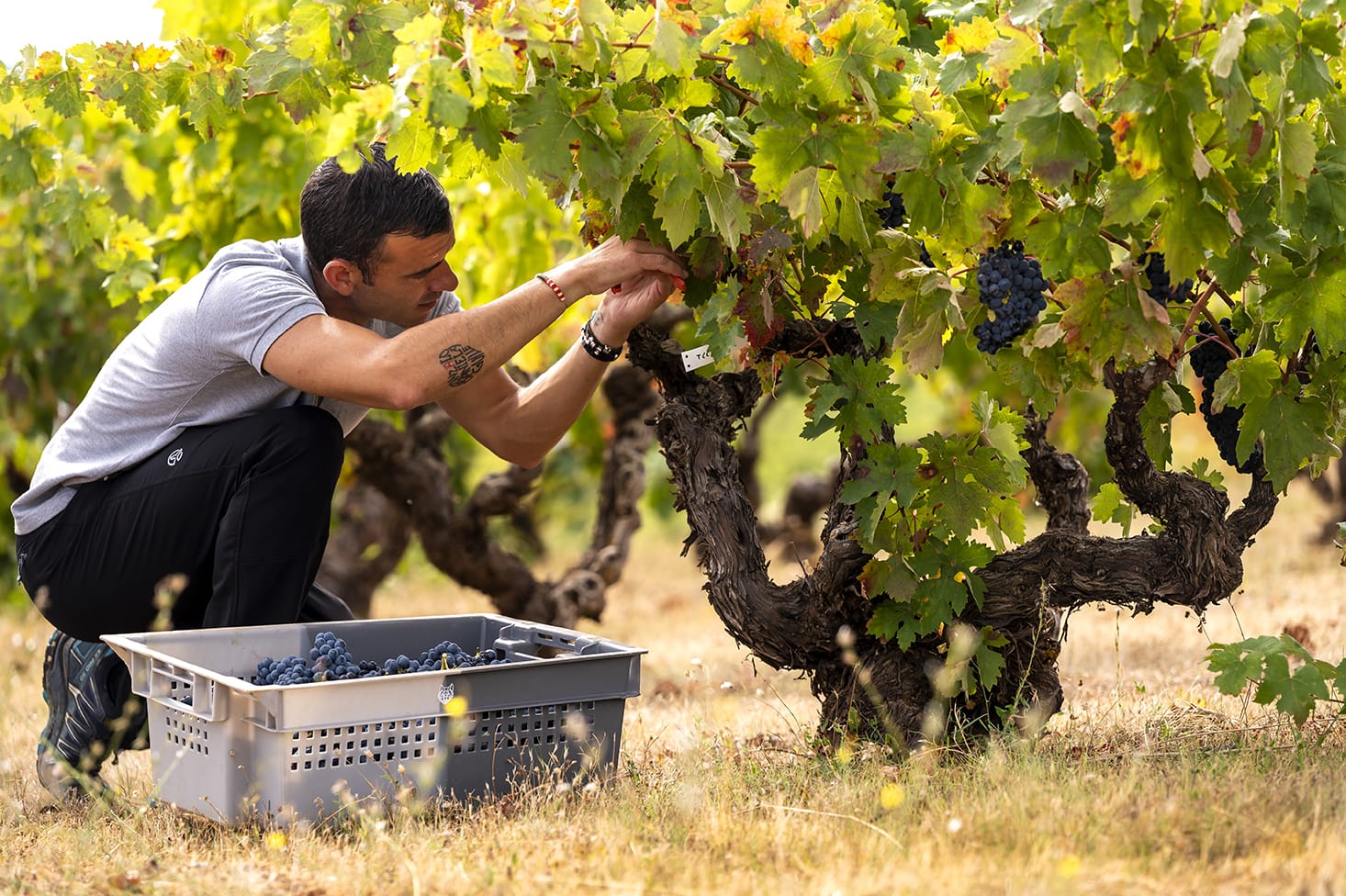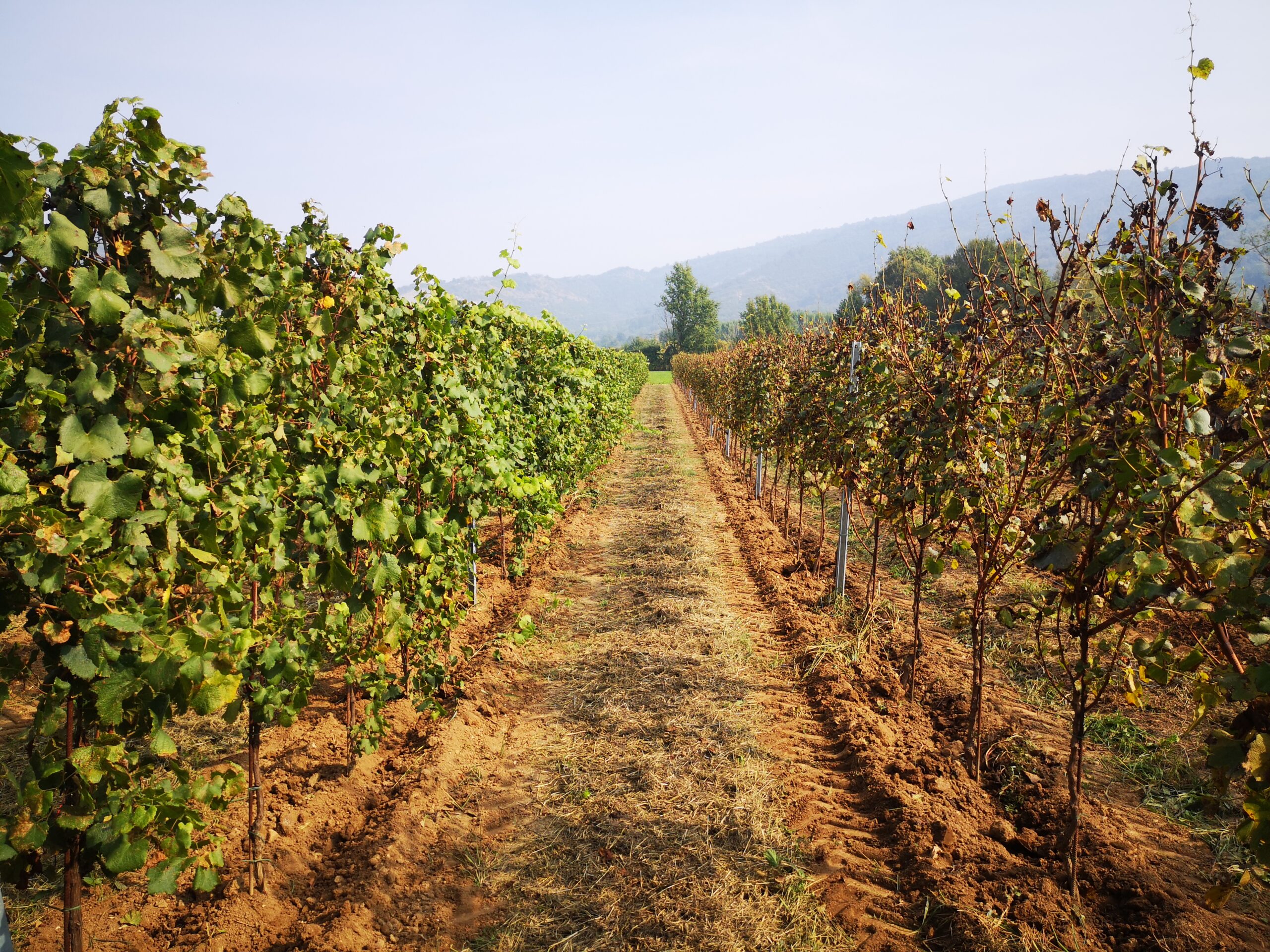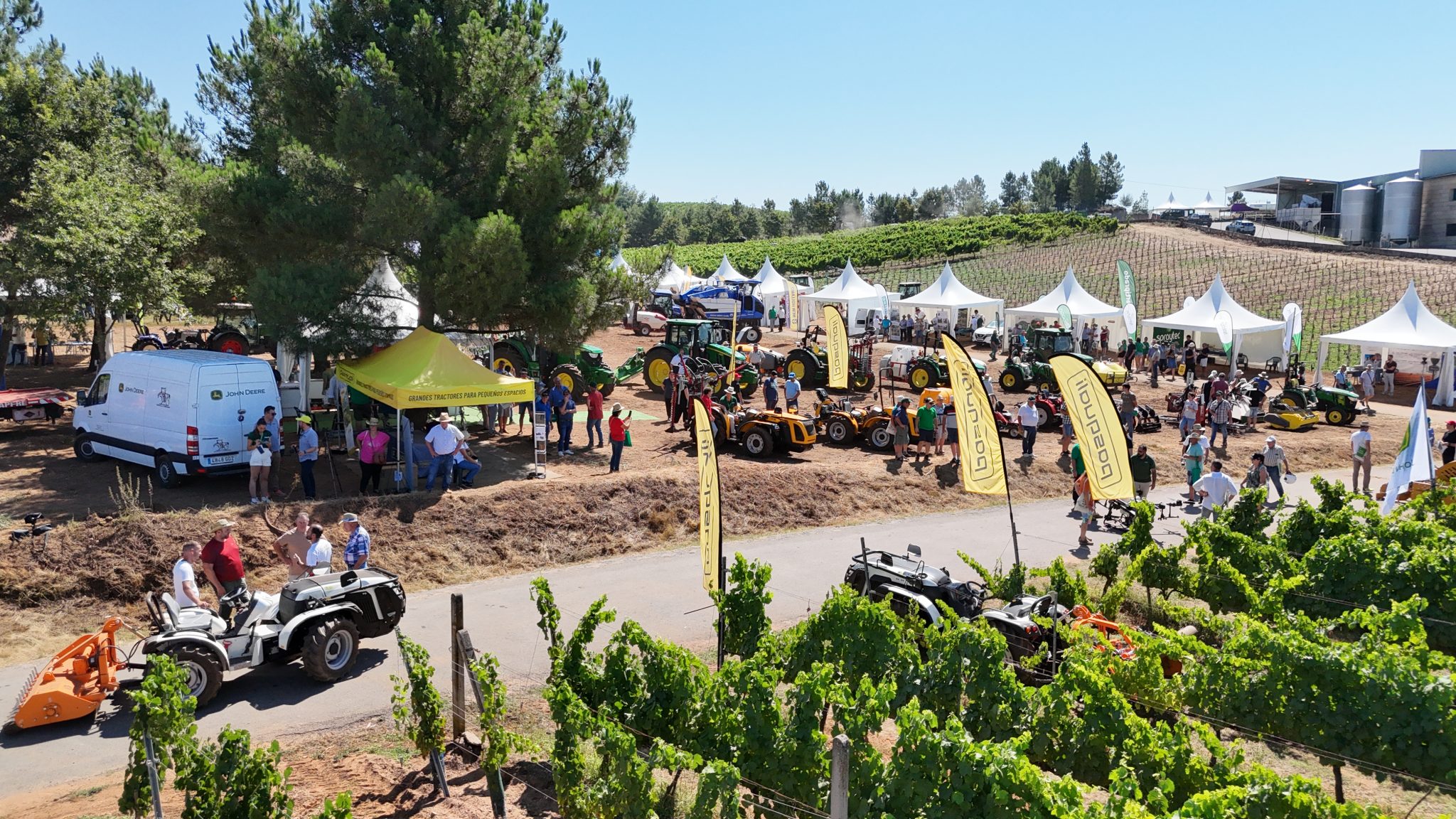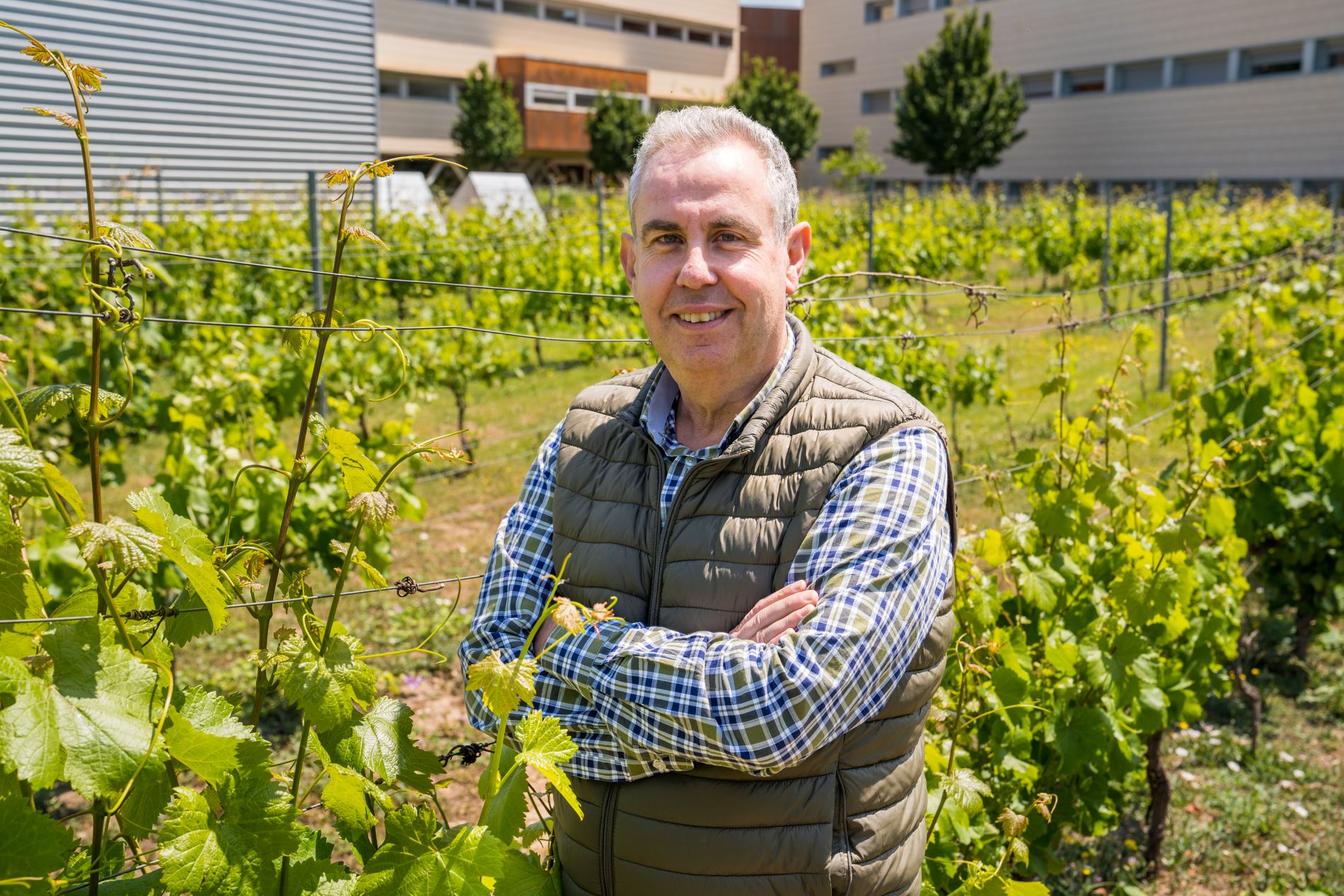Environmental Reality Triggers Agronomic Emergency in Crops
Climate change and viticulture: how drought and disease are driving to an agronomic emergency and reshaping sustainable crop strategies.
Anthropogenic climate change has been evident for over three decades. Initially, there was neither scientific nor societal consensus attributing this change to human activity; it was often explained by natural cycles or inherent climate variability. This perspective was particularly prevalent in Mediterranean climates, characterized by spatial and temporal variability and dual stressors: summer droughts with high temperatures and radiation, and cold winters with autumn and spring rainfall.
Moreover, climate change wasn’t fully acknowledged due to the often underappreciated perception of risk.
In recent years, to bring solutions closer to reality and foster collaboration among countries and institutions sharing similar ecosystems and geographies, the MedECC (Mediterranean Experts on Climate and Environmental Change) network was established. Its goal is to find responses for the Mediterranean region, which is and will continue to be affected by global warming, other environmental changes, resource overexploitation, and air and water pollution.
This new outcome was developed through an exchange with the Joves Agricultors i Ramaders de Catalunya (Spain) and made possible with the voluntary contribution of the MedECC members and authors, Robert Savé Monserrat (IRTA, UAB, Spain) and Arnau Queralt-Bassa (Advisory Council for the Sustainable Development of Catalonia, Spain), as well as the support of Plan Bleu (France).

Agriculture in the Mediterranean region has gained global recognition for its efficient resource management and the quality and stability of its final products. This success is rooted in agronomic methods based on eco-physiological and genetic knowledge of cultivated varieties and rootstocks. However, growth, yield, and quality of marketable products heavily depend on climate, which has been changing noticeably since the last century and will continue to do so unless common sense prevails.
Climate change projections for the Mediterranean indicate reductions in total available water this century. Considering global changes—including land use, energy costs, population growth, industrial needs, and biodiversity maintenance—there’s an anticipated increase in competition for water, necessitating prioritization based on needs.
Climate change will continue to raise global temperatures, but the challenge lies in determining local characteristics of this increase (rate, seasonality, differences between daytime and nighttime temperatures, and frequency and intensity of extreme thermal events). These subtle temperature/evaporation changes can significantly impact carbon source/sink balance, plant growth, morphology, metabolism, species phenology, and interspecies relationships such as predation, competition, symbiosis, or pathogenicity.
In this context, establishing holistic indicators at the plot and farm levels, considering their geographic realities, is crucial for adapting low-impact agriculture to climate change.
Additionally, high variability and uncertainty generate societal and systemic tensions, leading to unforeseen or underestimated issues that can cause significant dysfunctions in models, especially in climate and population projections.
Among the many dysfunctions in the agricultural system caused by climate change, this article focuses on drought and fungal diseases affecting foliage and fruit surfaces. These abiotic and biotic stresses share common environmental and anatomical/physiological components, notably the cuticle.
Plants, crops, and ecosystems share a circulatory system based on water movement along an energy gradient (water potential) driven by solar energy. This facilitates soil-plant-atmosphere water flow, allowing water uptake, distribution, accumulation in tissues, and transpiration across plant surfaces.
Transpiration enables thermal regulation and manages photosynthesis/respiration—key processes to mitigate stress, water deficits, and support growth and productivity.
This physiological water loss is primarily regulated by stomata, controlled by a complex hormonal, osmotic, and structural system linked to vascular tissues.
However, not all water loss is stomatal; some occurs uncontrollably through the cuticle—a lipid biopolymer covering all plant organs except lignified ones, composed of inner cutin and outer waxes. Its characteristics vary by species, organ, phenological stage, and environmental conditions, but it serves as a crucial defense barrier against drought and pathogens.
This eco-physiological trait helps reduce water loss, minimizing water deficits. For instance, in grapes, it can lead to less raisining of berries. Understanding varietal responses allows for agronomic strategies to enhance resistance to such environmental stresses.

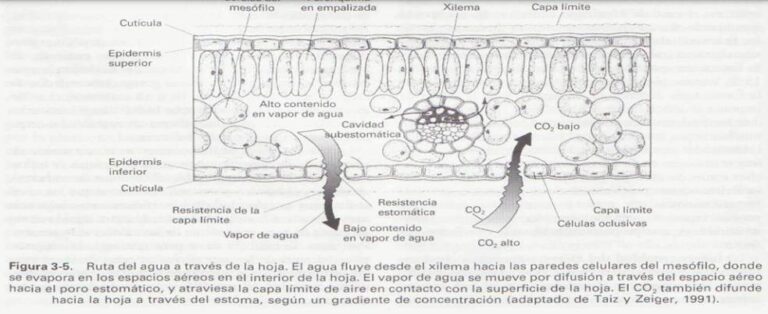
Currently, the European Green Deal proposes ambitious actions to make the EU climate-neutral by 2050. This impacts food production, particularly through the “Farm to Fork” strategy and the Biodiversity Strategy. Both are interconnected, as agroforestry and bioeconomic activities inherently occupy natural spaces.
Integrated production confines input use to precise crop requirements at specific times. Public administration has intensified agrochemical controls, limiting usable products and defining permissible levels and practices.
Among optimization tools to enhance production efficiency is biotechnology. Without genetic transformation, it can accelerate breeding processes, yielding more efficient organisms that reduce agrochemical use and are more drought-resistant or better suited to Mediterranean climates.
Genetic improvement can enhance plant adaptation to increasingly frequent and intense droughts due to climate change. Research focuses on improving water use efficiency at physiological and biochemical levels, aiming to reduce non-stomatal water loss through smaller leaf areas, more impermeable cuticles, or improved photosynthetic efficiency by increasing photosynthesis/respiration and photosynthesis/water ratios.
Over the past thirty years, efforts to improve wine quality have been continuous. Viticulturally, this has involved expanding the range of used varieties, rationalizing cultivation techniques, and clonal and sanitary selection of traditional vinifera varieties.
Current climate projections for the 21st century significantly alter clonal selection objectives. Most accepted scenarios predict temperature increases and reduced precipitation, leading to drought in quality wine-producing areas. Therefore, beyond varietal selection and improvement, clonal selection can be a valuable tool to maintain production under better conditions—an excellent adaptive option against environmental stresses like drought.
IRTA has been working for years to assess drought and resistance to Botrytis and Aspergillus in white and red Garnacha clones, relating these traits to cuticular characteristics. This involved drying grape berries under controlled conditions at three different relative humidities: 33%, 75%, and 100%.
Results show that white grape varieties have cuticular water loss rates 25% lower than red varieties. Clone GN18 exhibits statistically similar values to white varieties (GT1 and GT2) across all tested conditions and significantly lower than red clones GN10 and GN7.
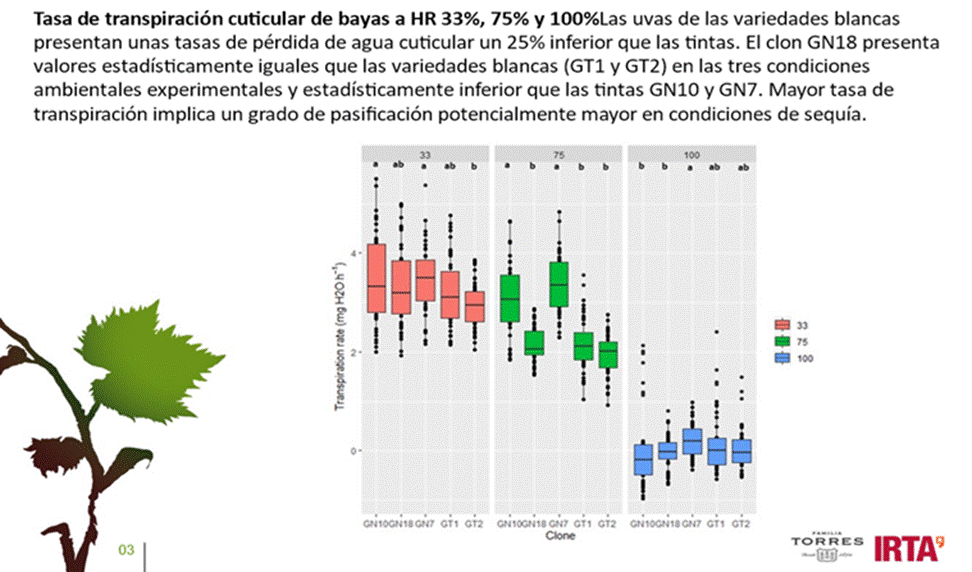
In fungal resistance tests, infections only developed under high relative humidity (100% RH), following the same pattern as water loss, influenced by local spore contamination and the year’s warm environment.

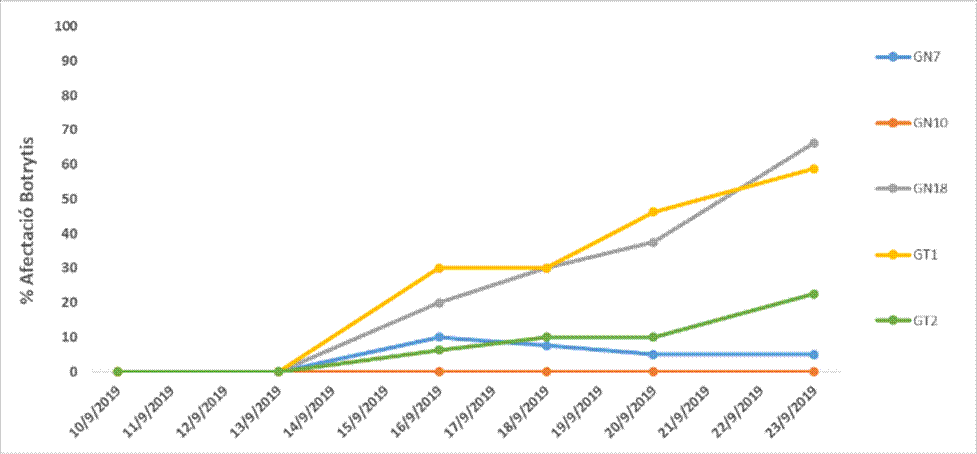
These findings align with the composition of berry cuticular waxes. Aliphatic waxes, known for influencing transpiration—particularly hydrocarbon and aldehyde fractions—are more abundant in clones GN18, GT1, and GT2, characterized by lower transpiration rates. Conversely, GN10 and GN7 cuticular waxes are richer in triterpenic compounds.
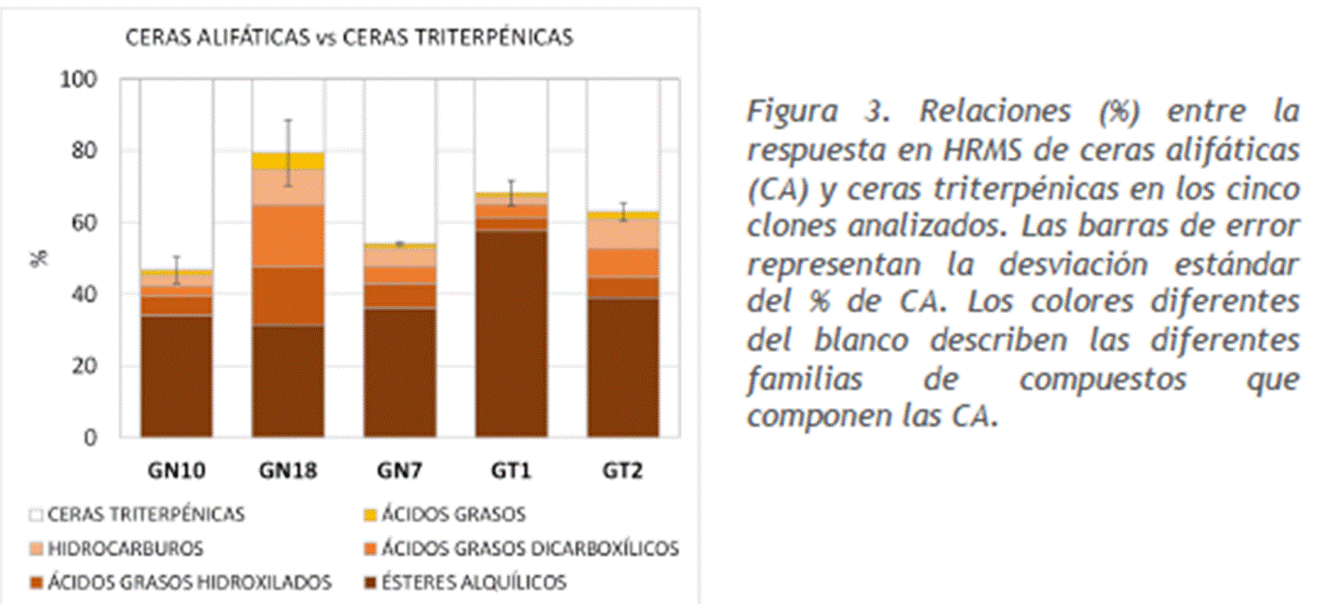
Another crucial aspect in developing adaptive strategies to climate change, aligned with environmental regulations from the Green Deal, is the availability of vineyard varieties resistant to diseases. This is vital for environmentally friendly agriculture, primarily by reducing pesticide use.
This offers economic benefits (reduced inputs, increased production, improved grape and wine quality) and environmental advantages (less surface and groundwater pollution, biodiversity preservation, and reduced human health risks).
Introducing resistance to various Vitis vinifera diseases, including powdery and downy mildew, has been part of grapevine breeding programs since the last century. Natural resistance genes in various Vitis species have been key to incorporating resistance into European Vitis vinifera varieties, leading to PIWI varieties (from the German “Pilzwiderstandsfähig,” meaning fungus-resistant) and, in Spain, VRIAACC (Resistant and Native Varieties Adapted to Climate Change).
Historically, first-generation resistant varieties were abandoned due to the risk of being overcome by new virulent fungal strains and later replaced by resistance sources of Asian origin.
A significant challenge with PIWI varieties is that they are new, genetically different from the original varieties used to introduce resistance, often derived from non-Vitis vinifera donors. Additionally, most PIWI varieties may not share the agronomic and enological characteristics of their predecessors.
Using new genomic technologies and the availability of the grapevine genome, it’s feasible to develop resistant grapevine varieties genetically very similar to the originals, unlike current resistant varieties. Combining genomics, pathology, and agronomy could lead to new disease-resistant varieties for the national wine sector.

Thus, genetic improvement of wine grape varieties plays a vital role in addressing both drought and fungal diseases.
Studying cuticles concerning water loss and susceptibility to fungal infections in berries presents an intriguing line of eco-physiological genetic improvement. This approach can help adapt this crop to current climatic realities, which pose a social emergency.
This article is based on the work of Felicidad de Herralde, Immaculada Funes, Xavier Aranda, Miquel Ribas, Blanca San Segundo, Stephanie Vichi, Neus Teixidó, Marta Olive, Elisenda Sanchez, Robert Savé, Gemma Bonet, Sandra Fernandez, Olga Serra, and Olfa Zarrouk from IRTA, CRAG, UB, UdG, and UIB, within the CIEN GLOBALVITI project and the Severo Ochoa Program for Centers of Excellence (MINECO, 2016–2019, SEV‐2015‐0533). The plant material is from Bodegas Familia Torres and INCAVI, currently under the INIA VUMOC project (AEI/10.13039/501100011033).


